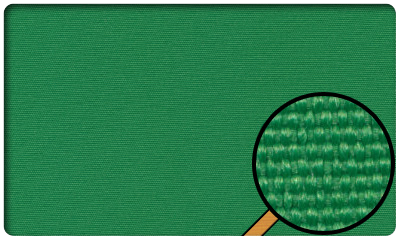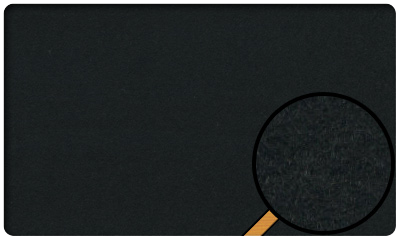Stage Curtains Request Form
Use the following form to submit your request. Clicking any of icons will open a pop-up with more info.
A drapery only quote is for "soft goods" that come in a box folded up. End user is responsible for installation.
Our installation services range from hanging drapery on existing track/pipe, to full design-build of complex rigging systems. Let us know what you're looking for in the comments box or by contacting us.
Often used for a Main Drape or Grand Drape, usually made from velour with 50% fullness (or more). Also used for mid/up-stage travelers.
Allows upstage areas to be hidden for scene changes or to simply make a more intimate scene.
Hangs in front of drapery tracks and lighting, prevents audience from seeing rigging/lighting fixtures.
Usually made of the same material as the drape it frames. Also known as a Teaser.
A Drop is a finished piece of fabric ready to paint, typically used for painting scenes.
Cycloramas have a similar construction, but are a solid color (usually white) and not intended for painting. The solid color allows for colorful backgrounds that change according to your lighting.
Legs serve a similar purpose as borders and hide the sides of your stage. Most theatre's have multiple pairs of legs, usually in front of each electric.
These unique drapes have an open weave which allows them to be opaque or translucent depending on the lighting. When built in to sets you can create dynamic scene shifts, such as from the exterior to interior of a house.
When lit from the front (only) scrim appears opaque. By adding light behind the scrim it becomes translucent.
Our generic term for any single piece of drapery not described by the options above. Can be as small or large as you want!
Total height of your drape, entered in feet and/or inches. We'll account for the top/bottom finish and make sure the finished drape is the height you enter here.
Total width of your drape, entered in feet and/or inches. We'll account for the side finishes and make sure the finished drape is the width you enter here.
For Bi-Parting pairs, you should enter the width of a single panel (side).
Total number of drapes in this exact style you'd like a quote on. You can add additional drapes to your request after this one.
For Bi-Parting pairs, you should enter an even number (1 pair = 2 panels).
Rarely used, some scenic artists prefer Canvas over Muslin when painting drops.
Also known as Chromas-Key, this fabric is perfect for your digital media needs. Also available in a blue color.
Used as an economical alternative for velour fabric. Natural cotton material which blocks light. Available in a range of colors.
Used as an economical alternative for velour fabric. Natural cotton material similar to Commando, but lighter weight and not as effective in blocking light. Available in a range of colors.
A scrim material which is filled instead of open, which creates beautiful reflected light for cycloramas.
Theatrical work-horse fabric, commonly used for drops, cycs, and to cover flats. Available in Natural, White, Black & Sky Blue.
Natural Velour is 100% Cotton and traditionally used in most theatrical applications, available in a wide range of colors and styles. Find out more about Natural Velour...
Synthetic Velour is becoming the new industry standard as it's become cost-competitive with Natural Velour. Features include increased tear resistance, and being Inherent Flame Retardant (never washes/wears out). Find out more about Synthetic Velour...
Ounce per square yard is the imperial measurement which is also commonly used. A higher number indicates more fabric thickness and weight. A lower number means thinner fabric.
For Regular Velour we recommend a 25 oz. fabric. For Synthetic Velour we suggest either 18 oz. or 24 oz.
While thicker drapery tends to absorb more sound, velour is not rated for sound absorption. Need detailed fabric info? See our specs for... Cotton Velour Specs Synthetic Velour Specs
The color of your drape. After selecting a fabric type and color a picture swatch is shown. These colors may vary due to color differences between monitors.
In addition, fabric is made in "dye lots" and slight color variations exist between batches. If you purchase drapes together they will come from the same "dye lot". Drapes purchased months or years apart may come from a different "dye lot".
Indicates whether a drape will be a single seamless piece, or have seams that combine pieces of fabric. Seamless fabric is always more expensive. We usually only recommend seamless fabric for cycloramas.
When choosing seamed fabric, we highly recommend vertical seams. Horizontal seams may rip when weight is applied to the bottom of the drape.
Bi-Parting pairs are designed to have an overlap in the middle, this finish determines how it will be sewn. Having a smaller center finish increases the risk that the back of the fabric will be visible when opening/closing, or when a person walks through when in the closed position.
For most applications we recommend a 27" (Half-Width) foldback, although an 18" one sometimes works. Does not affect the drape dimensions entered earlier.
Typically used when attaching to a track. The snap can be sewn flush with the top of your drape, or slightly above it.
Similar to Curtain Snaps, but has a visible grommet and snap. The snap can be removed and replaced with tieline for versatility.
Standard method of attaching to a pipe batten. Tie is 12" long and looped through a grommet. Spacing is usually 12" between grommets.

Also available in a hidden version (Opera Ties, above) which is not visible from the front of the drape.
Not a common option, but a great choice when you're covering the front of platforms. We sew the "fuzzy" side on the drape and include an adhesive roll of the "rough" side.
Used for DIY projects, or if you plan to attach your drape directly to a wall, etc.
Similar to a Pipe Pocket, but instead uses chain to weigh the drape down. Does not keep drape as flat as a pipe pocket, but a great choice for any drapery used in a rigging/fly system.
Also available with tape weights, which don't make noise during movement.
A standard side & bottom finish, we fold the fabric back and sew a straight line to prevent un-raveling.
A continuous pocket is sewn at the top and used to suspend the drape, typically used with Pipe & Drape setups.
Intended for 1" O.D. pipe battens, does not have any holes mid-pocket.
A continuous pocket is sewn at the bottom, commonly used for cycs and drops. By adding a pipe batten (usually 1" O.D.) through this pocket, it helps keep the drape flat with minimal wrinkles.

Also available with a skirt option (above), which helps hide the pipe from the audience.
Fullness determines how much fabric will be gathered at the top of the drape to create a pleated look. By adding fullness a drape changes from a flat shape, to a richer texture. Fullness can also hide seams in fabric, by strategically placing seams inside of fullness pleats.

Common styles are shown above, most drapery is sewn flat or with "Box" pleats.
How much extra fabric is added, 0% is none, and 100% is the width of your drape. Fullness does not affect the drape dimensions entered earlier.

Unless you want a flat drape, we normally use 50% to 100% fullness.
A simple Pipe Batten is the most economical choice if you don't have an existing attachment point for your drapery.
We use 1.5" ID Schedule 40 Pipe, which is the industry-standard and very robust.
Our Standard Duty track is the most common and works with drapery up to 20' high.
Handles up to 10 lbs. per carrier, only available in a straight layout.
This Heavy Duty track is what we recommend for drapery over 20' high.
Handles up to 25 lbs. per carrier, only available in a straight layout.
This track is perfect for studios and small spaces since it can be curved.
Handles up to 7 lbs. per carrier, curving layouts available (4' recommended radius).
We also carry Light Duty track, however this is best suited for meeting rooms & small windows.
Not recommended for drapery higher than 10', or heavy fabrics.
If your selected track comes in multiple colors you can choose it here. Otherwise it will be pre-filled with the only color option available.

If your drapery is a single piece, then you want a One-Way track layout (above). In the closed position your drape is stored on one side, and slides across when opened.

Bi-Parting drapes are sewn in pairs and designed to open/close towards the middle. In this configuration we stagger the tracks to allow an overlap in the center.
Available for "Low Profile" tracks only. Determines whether your track layout will have any curves, perfect for TV studios and cramped spaces.
90° Curved indicates you'll have one or more right-angle turns. Custom Curved is for specialty applications and requires custom fabrication.
For both curved options we recommend a minimum turning radius of 4'. A smaller radius is possible with custom track.
Walk-Along is our most economical option, in order to move the drape you just grab the side and pull!
With Hand Operated a rope loop is made which passes through the entire track and comes down towards the floor on one side. By pulling the rope loop you can open/close the drape from offstage.

Motorized systems are also available, allowing for integration into building management systems.

Track/Pipe has to be suspended from your ceiling in some form. For light-duty (small window) track we also have a wall mount option.

Mounting points are usually located every 6', but spacing of 4' or 8' is sometimes recommended. How these points attach depend on your building, and we'd be happy to answer questions on your specific venue.
Not available with all drape/track combos.
The 1" Bottom Pipe is for drapery with a bottom pipe pocket. Only recommend if hanging from pipe battens, can be a trip hazard when used with tracks.

Pivot Devices are used with drapes up to 6' wide and allow you to pivot the drapery for optimal sight-lines and backstage access. You can optionally add indexed stops, which are spaced every 22.5°.
There are also Travelling Pivot Devices, which move along a track. An optional neoprene brake kit prevents inadvertent movement.
Quote By? Do you need pricing by a certain date? If so enter it here. We typically can get pricing within 1 business day, specialized requests can take a few days.
Drapes By? Assuming you purchase these drapes, how soon would you need them? Typical lead time is 3-4 weeks, however Velour fabrics can take 8-10 weeks.





























